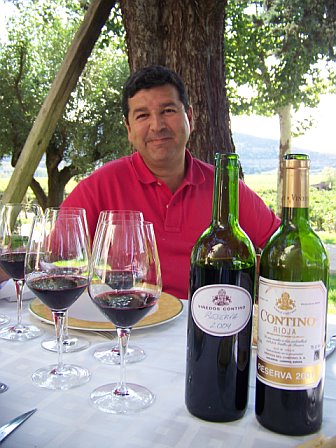Hi everybody,
Some people may wonder why I changed my blog's name? Well, here is the answer.
For the better, I just changed the name of my blog/website from www.wineandcolors.com to (logically) www.ledomduvin.com
First, because it sounds better and more people know this blog (and me) as "LeDom" (du Vin).
Secondly, because it sounds a bit more French and people find a certain originality to it.
After all, why not? It is a blog with a French name, about wine and food and other goodies in Life (and people love French food and wine and life style to a certain extend). Written in English by a French guy, naturalized American (and living in one of the most cosmopolitan town in the world: New York), it was, somewhat, natural and logical for me to bring both culture together.
Finally, it is also a bit sentimental and nostalgic. More than 17 years ago, before I started to work in restaurant and gradually entered the wine business, people already knew me as "Dom" or "LeDom".
I trained and worked in many places in France, like Paris, Orleans, Bourges, Strasbourg, and more especially Bordeaux (where I'm from and where I spent most of my time until the age of 24 years old), and the name of "Dom" followed me everywhere.
When I moved from Bordeaux to England as a Sommelier, 13 years ago, I met a guy at work who became one of my closest friends for years and used to called me "LeDom". The name sticked to me since then, and from Dominique or Dom, my name became quickly "LeDom".
People may think that it refers to "le Domaine du Vin" (Wine's Domaine) or "Le Dome du vin" (The wine Dome), it could and it might be (I quite like the thought of it...), but in fact... there is a more behind it...
People may think that it refers to "le Domaine du Vin" (Wine's Domaine) or "Le Dome du vin" (The wine Dome), it could and it might be (I quite like the thought of it...), but in fact... there is a more behind it...
"LeDom du Vin" more especially refers to the fact that as a young Sommelier in London, on Sunday (most Sundays should I say), when I wasn't working, I was meeting with other Sommeliers and wine lovers, friends of mine, to have long lunches with a lot of food, and more especially a lot of wines (everybody was bringing at least one or two bottles each to taste that day, and we were at least 4 or 5 people minimum meeting nearly every other week-end).
However, great food eater but not-necessarily-great-enough cook for my friends' taste, I was often assigned to organize, open, decant and serve the different aperitifs, champagnes, wines, liquors and digestives (which anyway, as Sommelier, was a perfect fit for me). And very often during these lunches, when certain persons were finished with their wine, they used to say: "LeDom, du Vin!!!", which literally translates to: "LeDom, more wine!!!"
So for me, for them, for you that are reading this blog and with nostalgia for all the good memories that these words bring to me, this blog will, from now on, be called "LeDom du Vin".
Some of you may have had some difficulties to read my blog over the last few days, however, Blogger.com should soon redirect all of the posts from www.wineandcolors.blogspot.com and www.wineandcolors.com to my new blog's name: www.ledomduvin.com
Thank you for all your support since I began last August and thank you for taking the time to read my blog. I'm open to all comments, so feel free to let me know what you think about my blog and about the posts in general.
Thank you again,
See you soon for more articles and posts about wine, food, culture and life in general.
Enjoy!
LeDom du Vin
Step into the Green! Drink more Bio and Organic wines (and food) from sustainable culture and respect the environment!






 The Sicilian winery of Valle dell’Acate has a long history amongst the top estates in Sicily, as the Jacono family can trace back their winemaking roots here to the nineteenth century.
The Sicilian winery of Valle dell’Acate has a long history amongst the top estates in Sicily, as the Jacono family can trace back their winemaking roots here to the nineteenth century.
